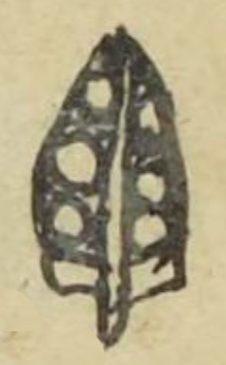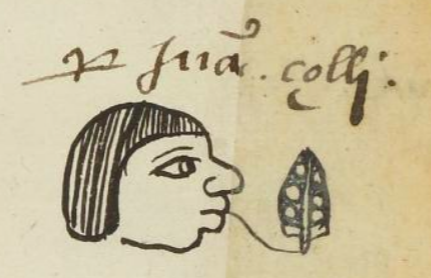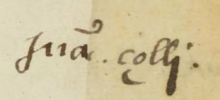Zolin (MH526r)
This painting of a quail (zolin) feather serves as the simplex glyph for the personal name Zolin, which might also mean old, used, or worn (zolli) if the feather is only serving as a phonetic indicator. But the quail is a prominent feature in Nahua culture. The feather is upright, black, and has six white circles.
Stephanie Wood
The quail had a role in the religious life of the Nahuas, largely serving as offerings. Their remains are very prevalent in the finds at the Templo Mayor, and they are prominent in the Mixtecs' Codex Nuttall. For further information see Elena Mazzetto, "Quail in the Religious Life of the Ancient Nahuas", en Milbrath, Susan y Elizabeth Baquedano (coords.), 2023, Birds and Beasts of Ancient Mesoamerica. Animal Symbolism in the Postclassic Period, Denver, University Press of Colorado, pp. 200-219.
Stephanie Wood
juā. çolli.
Juan Zolli (or Zolin)
Stephanie Wood
1560
plumas, feathers, birds, pájaros, codornices, codorniz, quails

zol(in), quail, https://nahuatl.wired-humanities.org/content/zolin
Matrícula de Huexotzinco, folio 526r, World Digital Library, https://www.loc.gov/resource/gdcwdl.wdl_15282/?sp=131&st=image.
This manuscript is hosted by the Library of Congress and the World Digital Library; used here with the Creative Commons, “Attribution-NonCommercial-ShareAlike 3.0 License” (CC-BY-NC-SAq 3.0).





